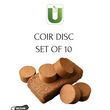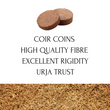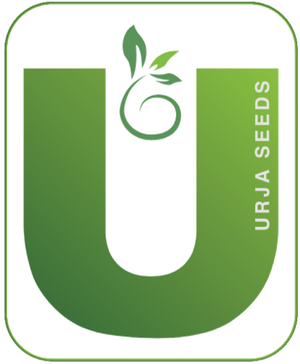

Coir Disc Set of 10
Regular price
Rs. 199.00
Sale price
Rs. 399.00
Unit price per
Description:
A coir disc, also known as a coco coir pellet or coir pellet, is a small, compressed disc made from coconut coir, which is the fibrous material found between the hard, internal shell and the outer coat of a coconut.
Benefits of coir disc
· Bio-degradeable
· Excellent water retention
· Good aeration
· pH neutral
· easy to use
Overall, coir discs offer numerous advantages for gardeners and growers, making them a popular choice for starting and propagating plants.
How to use coir dic-
Using coir discs is a straightforward process.
Here's a step-by-step guide on how to use them effectively: Using coir discs is a straightforward process.
1. Select Your Container: Choose a container or tray that has drainage holes at the bottom to allow excess water to drain out. This could be a seedling tray, small pots, or any container suitable for starting seeds or propagating plants.
2. Prepare the Coir Discs: Coir discs are usually sold in a dehydrated form to save space. Place the desired number of coir discs in a large container or tray, and add water. The discs will begin to absorb water and expand. Allow them to soak until they fully expand and break apart, which usually takes a few minutes.
3. Drain Excess Water: Once the coir discs have fully expanded, gently squeeze out any excess water. The coir should be moist but not waterlogged. If there's excess water in the container, tilt it to drain out the water.
4. Fill Containers: Fill your chosen containers or trays with the expanded coir. Press down lightly to ensure even distribution and remove any air pockets. Leave a little space at the top of each container to accommodate seeds or cuttings.
5. Plant Seeds or Cuttings: Follow the specific planting instructions for your seeds or cuttings. Make small indentations or holes in the coir using your finger or a dibber, and place the seeds or cuttings into the prepared holes. Cover them lightly with more coir or leave them exposed, depending on the requirements of the plant.
6. Water Gently: After planting, water the coir gently to ensure thorough moistening. Avoid overwatering, as this can lead to waterlogging and potentially harm your seeds or cuttings. A fine mist or gentle stream of water works well for watering newly planted seeds or cuttings.
7. Provide Proper Care: Place the containers in a location with adequate sunlight or under grow lights, depending on the needs of your plants. Monitor the moisture levels regularly and water as needed to keep the coir moist but not soggy.
Total Number of disc: 10




